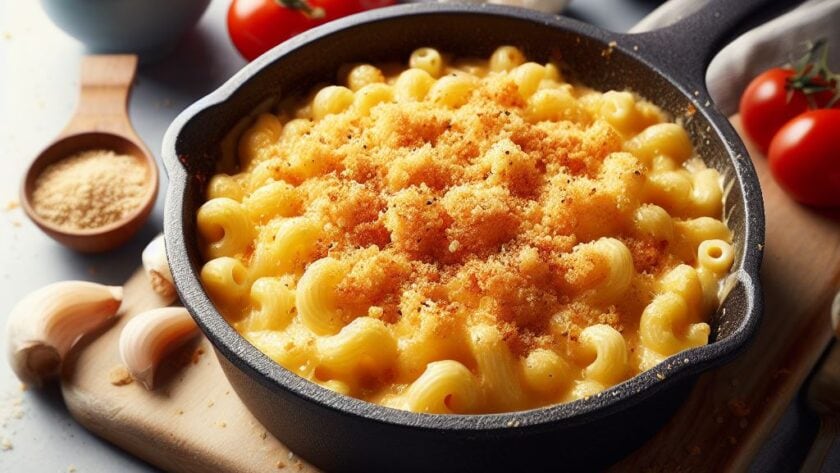Mac and cheese is more than just a comfort food—it’s a nostalgic experience that, when done right, can feel like a warm hug on a plate. Whether you prefer the gooey richness of stovetop mac and cheese or the crispy, golden crust of the baked variety, mastering this classic dish requires a bit of science and some key techniques. Let’s break down what goes into creating the ultimate mac and cheese and why certain ingredients and methods yield that perfect creamy, cheesy texture we all crave. Stick around for the literal ultimate mac and cheese recipe on the planet to cap it all off.
The Science Behind the Creaminess: Stovetop vs. Baked
Stovetop Mac and Cheese focuses on a silky, smooth cheese sauce that clings to each piece of pasta. The secret to that velvety texture? A proper cheese sauce that balances fat, starch, and proteins without breaking or becoming grainy.
- The Roux: The base of many stovetop mac and cheese recipes is a roux—a combination of butter and flour cooked together to thicken the sauce. When you add milk (or cream) to the roux, it creates a stable sauce that acts as a vehicle for melted cheese.
- Cheese Selection: Not all cheeses melt the same. For the smoothest sauce, look for cheeses with high moisture content and good melting properties like cheddar, Gruyère, or Fontina. Low-moisture cheeses like Parmesan can add flavor but won’t contribute to the creaminess.
- Emulsifiers: Starch from the pasta helps the sauce emulsify, preventing the fat from the cheese from separating. This is why it’s important not to over-drain your pasta and to toss it quickly into the sauce, allowing the starch to bind everything together.
Baked Mac and Cheese, on the other hand, is all about that crispy, golden crust that forms on top after a stint in the oven. While baked versions can also start with a stovetop cheese sauce, they often feature additional textures and layers.
- Casserole-Style: Baked mac and cheese is typically assembled by mixing cooked pasta with a cheese sauce, then pouring it into a baking dish. Extra cheese, breadcrumbs, or even crushed crackers can be added to the top for that iconic crispy finish.
- Baking: The oven dries out the top layer, creating a contrast between the gooey interior and the crisp exterior. This combination of textures makes baked mac and cheese feel more indulgent, as each bite offers both a creamy and crunchy element.
Key Ingredients for the Perfect Mac and Cheese
- Pasta: The right pasta shape matters. Short shapes with lots of nooks and crannies, like elbows, shells, or cavatappi, are perfect for holding onto the sauce. Avoid long, thin pastas like spaghetti, as they won’t catch the cheese sauce as effectively.
- Cheese: A blend of cheeses works best. Sharp cheddar brings bold flavor, while milder cheeses like Monterey Jack or mozzarella ensure smooth melting. For extra depth, add a stronger, nutty cheese like Gruyère or Parmesan.
- Milk/Cream: Whole milk is often used for a balance of richness without being too heavy, but you can add cream or half-and-half for a more indulgent version. Just be careful not to overdo it with too much cream, which can make the sauce too thick.
- Butter and Flour: These are essential for making the roux, which thickens the cheese sauce and ensures that everything binds together.
- Mustard/Hot Sauce: A little bit of Dijon mustard or a dash of hot sauce may seem strange, but they add a subtle sharpness that enhances the flavor of the cheese without making the dish taste overly spicy or tangy.
- Breadcrumb Topping (for Baked): A mixture of panko breadcrumbs, butter, and grated cheese can be sprinkled on top before baking, adding that coveted crispy topping.
Now, let’s get to the good stuff—the literal ultimate mac and cheese recipe on the planet. This version gives you the best of both worlds: the creamy, silky richness of stovetop mac and cheese, with the added texture of a golden, crunchy baked top.



